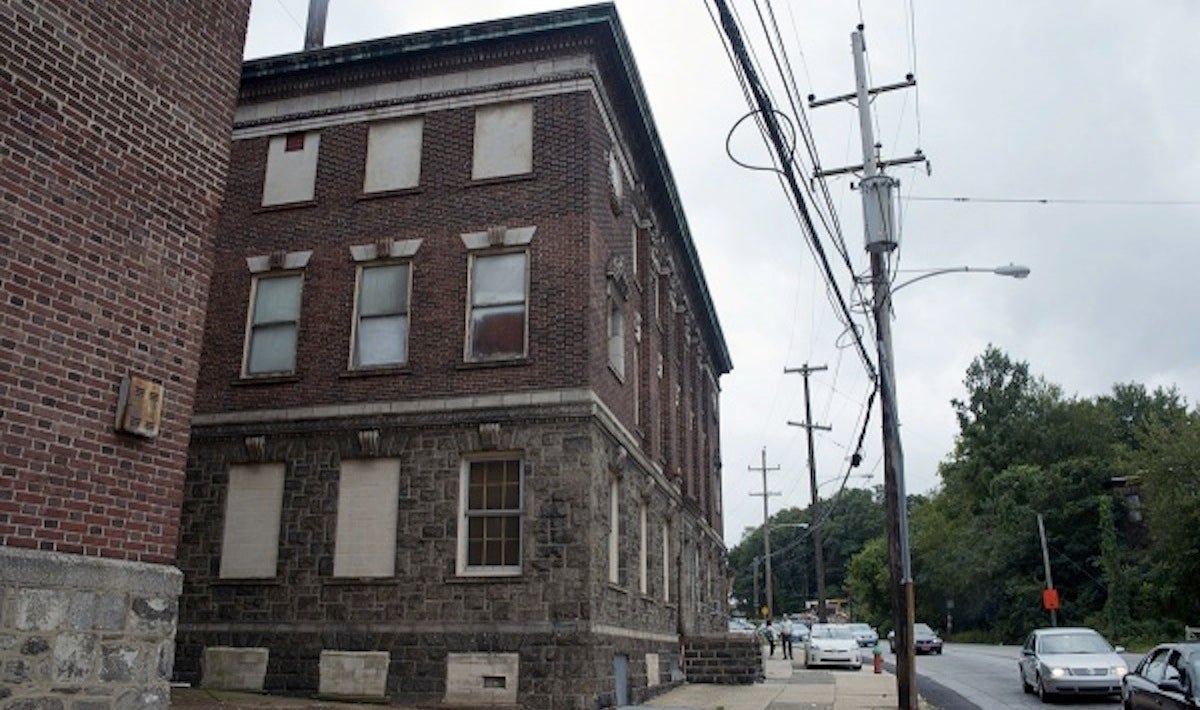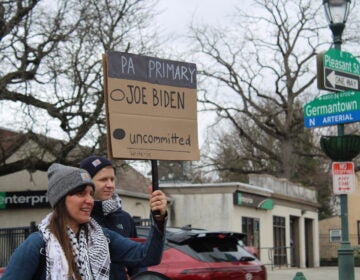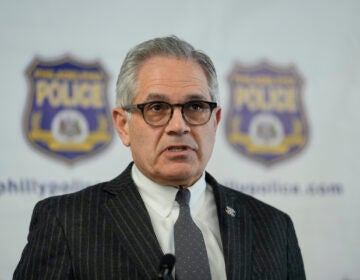Former Germantown industrial site to house community preservation initiative

The former Max Levy Autograph Co. building on Roberts Avenue in Germantown, shown here, will house Gray Area. (Bas Slabbers/for NewsWorks, file)
A vacant factory in southwest Germantown is the blank canvas for a new historic preservation experiment.
The result probably won’t be a particular renovation or reuse plan for the local subject of the experiment. The project is called Gray Area, and the coordinators hope it will stimulate the gray matter of neighbors and get them engaged in the preservation process.
At the initial neighborhood meeting Monday night in the Germantown Theatre Center — the first of two such conversations planned there — project director Elise Vider said the idea of Gray Area is “intended to be collaborative and to get different audiences thinking and talking about historic preservation for the 21st century.”
The Gray Area project began in 2011, with funding from the Pew Center for Arts & Heritage, and involved panel discussions and other dialogue among preservationists and related professionals.
Over the next nine months, Gray Area will use three Philadelphia buildings as laboratories to push the boundaries of preservation, examining their history and roles in the neighborhoods that surround them.
A building once thriving
In Germantown, the project site is the Max Levy Autograph Company building at 212-220 Roberts Avenue, near the Wayne Junction station.
Historic consultant Patrick Grossi provided the history of the Autograph Company, which processed photochemicals, not collectible signatures. The Beaux Arts-style factory was erected in 1902, and was one of the first buildings in the U.S. to use reinforced concrete in its construction. With additions made from 1912 to 1950, the building encompassed 26,000 square feet.
In its heyday, the Max Levy company fit well into Philadelphia’s identity as both the industrial “workshop of the world” — with 16,000 manufacturing plants — and a city of row homes — some 310,000 dwellings and 85 percent of them single family homes. Unlike many of the city’s old factories, the Levy building was utilized by its original company until 2007, when the firm moved to the new quarters in Northeast Philadelphia.
Grossi said he is now collecting the narratives about the building from longtime neighbors, who recall better, self-sufficient times in Wayne Junction and the thriving commercial corridors that have since faded.
The two dozen participants in Monday night’s gathering, some of whom had lived in the area for decades and some for a few years, were asked about their memories of the Max Levy building, and what they could imagine now in the former factory.
Community input
Office space. Educational alternatives. Small shops. A social club or lounge. Clothing outlets. Product markets. A pop-up restaurant and performance space. Art galleries. A transportation hub. A return to manufacturing.The responses were as varied as the needs of the neighborhood.
YahNe Ndgo Baker, who has lived in Germantown for six years, said it was vital that the larger community be involved in any discussion of development, and that they too benefit from whatever becomes of the building. “Preserving community” can’t be forgotten in preserving buildings, she said.
Ann Doley, a resident of Germantown for 32 years, remembered when the Max Levy company still occupied the building and “still had life there.” She imagines the building as a mixed-use space of offices and commerce serving the community. “Any good tenant there would be great. But it won’t survive in isolation,” and the surrounding buildings must be taken into account as well, she said.
Also in the audience was local developer Ken Weinstein, who bought the Max Levy building a year ago for $150,000 and has already invested another $80,000 to remove hazardous materials. Weinstein said he has no specific plan for the future of the building, which is why he volunteered the structure for the Gray Area experiment.
Going forward
Anyone who wants to get a look inside the empty factory is invited to join an open house on Saturday, Oct. 26, from 11 a.m. to 1 p.m. The building is dark; bring a flashlight.
The next conversation in the Gray Area experiment will be back at Germantown Theatre Center, 4821 Germantown Ave., on Nov. 20 at 6:30 p.m.
Gray Area, which is a project of the University of the Arts and DesignPhiladelphia, will also look at Hawthorne Hall, a commercial building at 3848 Lancaster Avenue, and the Bromley-Garsed Mansion, the former YMCA in Frankford.
NewsWorks has partnered with independent news gatherer PlanPhilly to provide regular, in-depth, timely coverage of planning, zoning and development news. Contact Alan Jaffe at alanjaffe@mac.com.
WHYY is your source for fact-based, in-depth journalism and information. As a nonprofit organization, we rely on financial support from readers like you. Please give today.






